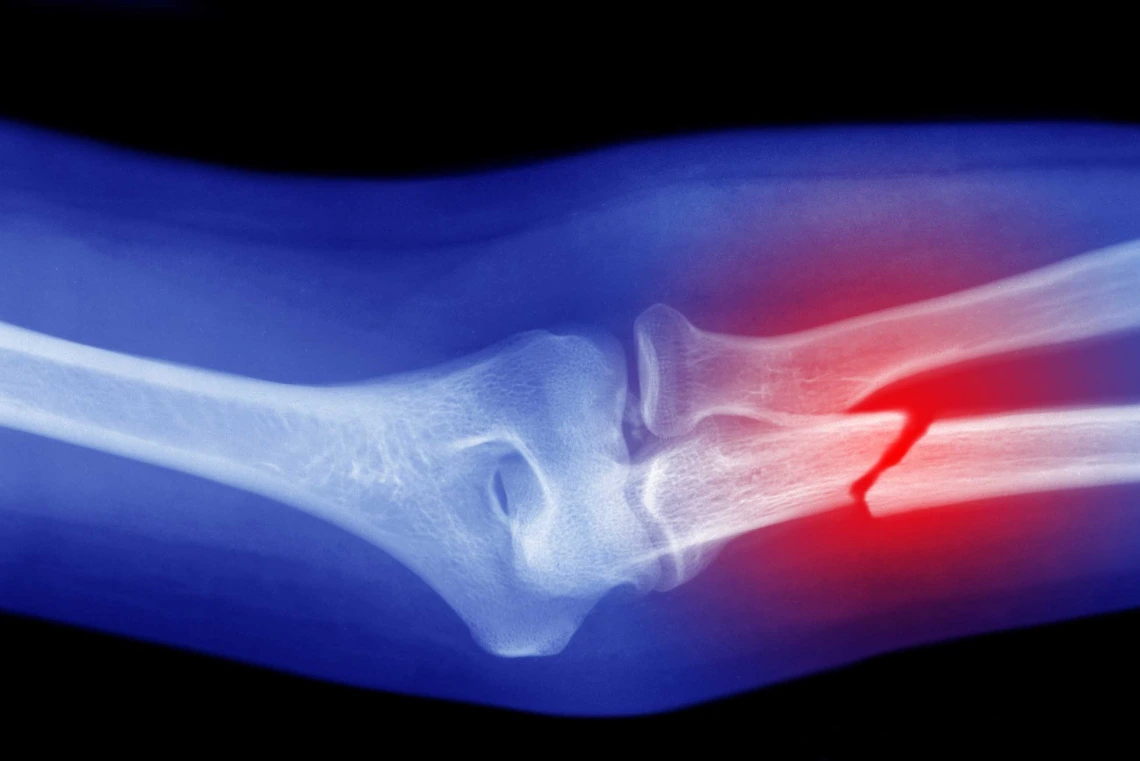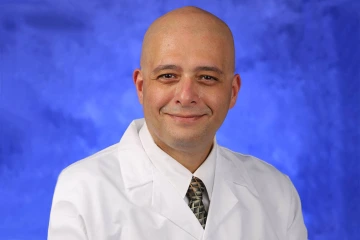Repurposed multiple sclerosis drug could help bones heal faster
A University of Arizona-led study found that 4-aminopyridine sped up bone fracture repair in mouse models, ramping up the activity of key genes.

Researchers found evidence that a drug that improves the ability to walk in people with multiple sclerosis can also make bone fractures heal faster.
Researchers at the University of Arizona College of Medicine – Tucson found evidence that a drug that improves the ability to walk in people with multiple sclerosis can also make bone fractures heal faster.
The findings help further the understanding of specific factors involved in the bone healing process, and potentially open avenues for new therapeutic approaches.
“Broken bones are typically slow to heal in many people, and they can impact lives for months and in different ways. People lose time at work and daily activities at home with family and friends are impacted,” said senior author John Elfar, MD, professor, surgeon and chair of the Department of Orthopaedic Surgery at the U of A College of Medicine – Tucson. “This drug has the potential to change that.”

John Elfar, MD, is chair of the Department of Orthopaedic Surgery at the U of A College of Medicine – Tucson.
Elfar partnered with Prem Kumar Govindappa, PhD, DVM, an assistant professor in the department, on the preclinical study that showed treatment with the drug 4-aminopyridine, or 4-AP, resulted in leg fractures healing faster and stronger than without the drug. The paper was published in The Journal of Bone and Joint Surgery.
“Mice with bone fractures healed quicker and were stronger after they healed after treatment with 4-AP,” said Elfar said, who is a member of the university’s BIO5 Institute. “We saw more bone mass and less intermediate cartilage, meaning there was accelerated bone healing.”
The drug is approved for use in chronic neurological conditions, where it helps with walking by improving how signals from the brain and spinal cord reach limbs.
The team also saw improvements in bone mass and the ability to bear weight after treatment with 4-AP. Collagen deposition and bone mineralization, both of which are necessary for bone healing, also received a boost. Collagen forms the structural foundation of bones. In bone mineralization, minerals like calcium and phosphate join the newly forming bone matrix, strengthening and hardening the bone.
“We found that every fine-tuned measure of the strength of bone was better after administering 4-AP to mice,” Elfar said. “We also found more BMP2 protein in bone-forming cells at the fracture site, which again told us we found something that could accelerate the process.”
Examining human bone cells exposed to 4-AP in a dish, the scientists saw increased production of bone morphogenetic protein, or BMP2, a bone-building substance used clinically to help with some kinds of bone repair. BMP2 prompted the production of stem cells that become cells called osteoblasts, which are essential to form new bone.
The research team also measured 4-AP’s effects on human bone narrow mesenchymal stem cells and human osteoblast cells in the lab. 4-AP increased the conversion of the stem cells into osteoblasts and the latter’s ability to migrate and grow, which are essential to the healing process.
Elfar said that 4-AP’s role in driving BMP2 gene and protein activity is key to its bone healing effects, and using 4-AP to prompt BMP2 production in the body could be especially important.
“BMP2 is a hormone the body makes to accelerate bone healing,” Elfar said.
BMP2 is known to modulate bone healing and is approved for use in certain medical procedures, including spinal fusion and sinus reconstruction surgery. An artificial version that has orthopedic medicine uses can have side effects, though, including bone resorption and cervical spine swelling. Finding a way to channel naturally produced BMP2 could improve bone healing while avoiding such problems.
The scientists previously showed that 4-AP could prevent bone and muscle loss in a mouse model of nerve damage. Similarly, they saw indications of 4-AP’s healing effects for wound, nerve and limb injuries.
The researchers plan to eventually test 4-AP’s potential use in healing bones in a clinical trial. They also want to better understand the drug’s effects on BMP2 production, and more broadly, on the biology of healing bone.
Co-authors from the College of Medicine – Tucson’s Department of Orthopaedic Surgery include postdoctoral research associate Govindaraj Ellur, PhD, research laboratory manager David A. Gonzales, and David S. Margolis, MD, PhD, an associate professor and surgeon. Additional co-authors include Gerardo Figueroa Romero, a doctoral candidate in the U of A College of Engineering’s Department of Biomedical Engineering.
This study was funded in part by the National Institute of Arthritis and Musculoskeletal and Skin Diseases, a division of the National Institutes of Health, under award number K08AR060164‐01 and the Department of Defense under award number W81XWH‐16‐1‐0725A.
Experts
John Elfar, MD
Chair and Professor, Department of Orthopaedic Surgery, College of Medicine – Tucson
Member, BIO5 Institute

